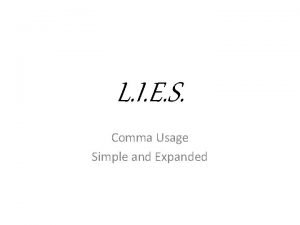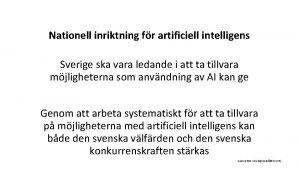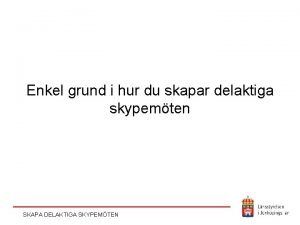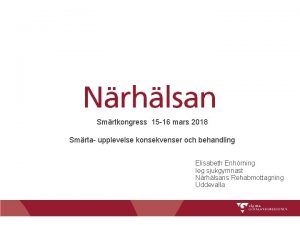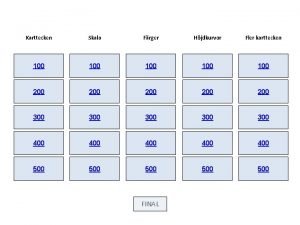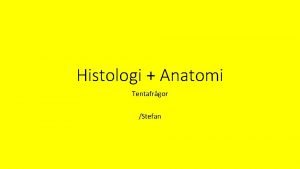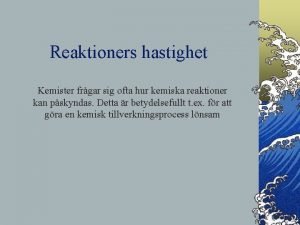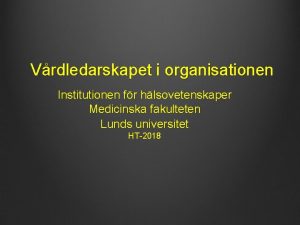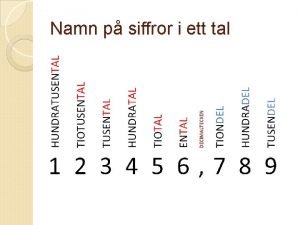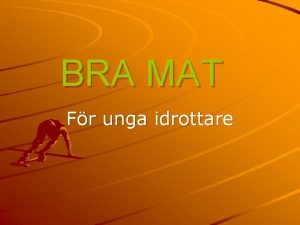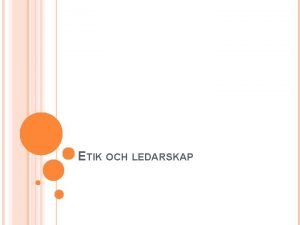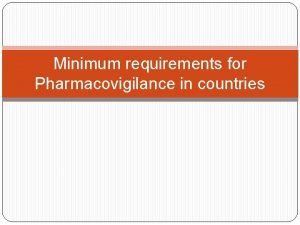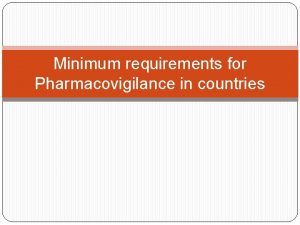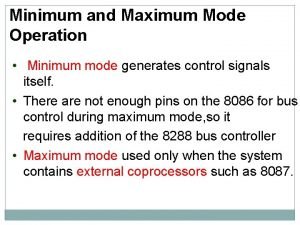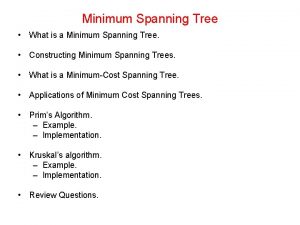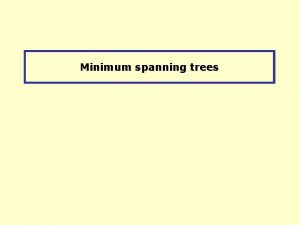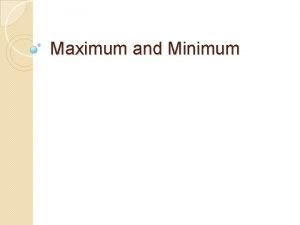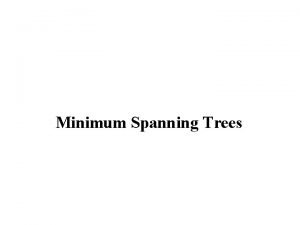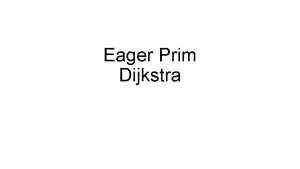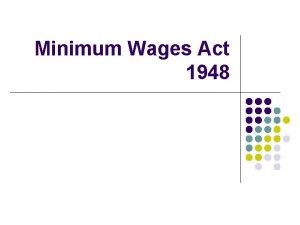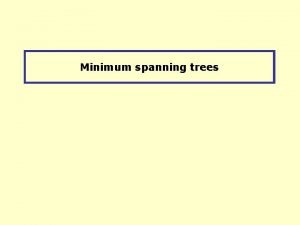Minimum requirements for the 13 k A splices





















![13 k. A requirements circuit t [s] Condition Max Raddit for RRRbus=100 Max Raddit 13 k. A requirements circuit t [s] Condition Max Raddit for RRRbus=100 Max Raddit](https://slidetodoc.com/presentation_image_h2/8df386ccc2b2af637ecd92012edabc71/image-22.jpg)
![5 Te. V requirements circuit t [s] Condition Max Raddit for RRRbus=100 Max Raddit 5 Te. V requirements circuit t [s] Condition Max Raddit for RRRbus=100 Max Raddit](https://slidetodoc.com/presentation_image_h2/8df386ccc2b2af637ecd92012edabc71/image-23.jpg)
![3. 5 Te. V requirements circuit t [s] Condition Max Raddit for RRRbus=100 Max 3. 5 Te. V requirements circuit t [s] Condition Max Raddit for RRRbus=100 Max](https://slidetodoc.com/presentation_image_h2/8df386ccc2b2af637ecd92012edabc71/image-24.jpg)






- Slides: 30

Minimum requirements for the 13 k. A splices for 7 Te. V operation - type of defects - FRESCA tests and validation of the code QP 3 - a few words on the RRR - Isafe vs Raddit plots - conclusion Arjan Verweij TE-MPE A. Verweij, TE-MPE. LHC Performance Workshop – Chamonix 25 -29 Feb 2010 1

Defect A is very likely to be found using the monitoring feature of the n. QDS system, which should reveal all bad splices with a resistance larger than a few n. W. Additionally, the sub m. V detection threshold on the bus segments will trigger before the resistive dissipation will cause the SC-to-normal transition followed by a thermal runaway. Mechanically, defect A might present a problem (even if it has a resistance of a few n. W)!!! A. Verweij, TE-MPE. LHC Performance Workshop – Chamonix 25 -29 Feb 2010 2

§ Defects B, C, and D can be present on 1 or 2 sides of the joint. § Single sided defects B and C are the worst case scenarios, assuming that the defect size is estimated from a R 16 measurement or from a Rsegment measurement (30 -100 m long). These defects have been used in the FRESCA tests. § Defect D is the predominant defect in the machine. The stabiliser-stabiliser contact in the vertical gaps may degrade in time (see lateron). § Maximum safe operating currents will be calculated for single-sided defect B (or C) as a function of the additional resistance Raddit (at 300 K), with Raddit=R 16, defect-R 16, good. A. Verweij, TE-MPE. LHC Performance Workshop – Chamonix 25 -29 Feb 2010 3

FRESCA tests and validation of the code QP 3 Thanks to: G. Willering, G. Peiro, D. Richter, H. Prin, C. Urpin, P. Fessia, Th. Renaglia, Ch. Scheuerlein, L. Gaborit, L. Bottura, K. Chaouki, L. Gaborit, L. Fiscarelli, V. Inglese, G. Montenero, C. Petrone, R. Principe, S. Triquet for sample preparation, instrumentation, data acquisition, and running of the test station and cryogenics. Thanks to: R. Berkelaar and M. Casali for comparison of QP 3 with two other models for a specific case study. A. Verweij, TE-MPE. LHC Performance Workshop – Chamonix 25 -29 Feb 2010 4

Experiments in FRESCA (B-163) are performed, mainly to validate the calculation code. Up to now 3 samples with ‘on-purposely-built-in’ defects are measured. Two more samples will be measured in Feb. 2010. Step 1: Sample definition Determine values for Raddit, RRRcable, RRRbus, RRRjoint, and geometry (type of insulation, positioning of heaters, spiders, spacers etc. ) Step 2: Measurements Measure thermal runaway time t. TR for various currents, temperatures, and fields. During each test the voltage and temperatures are recorded. The power converter is switched off before the defective joint reaches 300 K. Step 3: Analysis Fine-tune the effective cooling through the bus insulation and the joint insulation, so that the calculated t. TR(I, B=0, T=1. 9 K) curve and calculated V(t) curves are in good agreement with the measurements. The validated code is then used to calculate Isafe(Raddit) for the machine, assuming the worst heat transfer observed on the samples, and the worst RRR values that can occur in the machine. A. Verweij, TE-MPE. LHC Performance Workshop – Chamonix 25 -29 Feb 2010 5

Machine (to be) Measured Sample 1 Sample 2 A Sample 2 B Sample 3 A Sample 3 B Oct 2009 Nov 2009 Feb 2010 Interconnect type RB and RQ RQ RQ Defect type (A, B, C, ) D Single-sided B Double sided C Single-sided C Double sided C Single sided C Length NSBC 0 -50 mm ? ? 47 mm 27 + 35 mm 33 + 20 mm 16 mm → talk Koratzinos 61 m. W 32 + 43 m. W 42 m. W 43 + 26 m. W 21 m. W RRR bus >100 ? 300 270 290 150 ? RRR cable > 80 ? 180 130 + 100 160 100 -150 ? 100 -150? Machine-type 2 mm G 10 + glue Machine-type 90% 25 -60% 60 -70% Raddit Splice insulation Eff. cooled surface Field Self-field (+ applied field) Current profile Expon. decay (t=10 -100 s) Constant current Helium environment LHe and GHe LHe Horizontal tube with diam. 90 / 103 mm Vertical tube with diameter 72 mm Enclosure Length sample 1. 5 m A. Verweij, TE-MPE. LHC Performance Workshop – Chamonix 25 -29 Feb 2010 6

Sample pictures Sample 1 (61 m. W) Sample 3 A left (26 m. W) Sample 2 A left (32 m. W) Sample 3 A right (43 m. W) Sample 2 A right (43 m. W) Sample 3 B (21 m. W) Sample 2 B (42 m. W) A. Verweij, TE-MPE. LHC Performance Workshop – Chamonix 25 -29 Feb 2010 Pictures by J. -M. Dalin 7

Typical test run with and without thermal runaway Measure t. TR(T, I, B) Switch off current if V>Vthr (100150 m. V) Rapidl yi (heatin ncreasing U g>>>c ooling and T ) Current between 2 -20 k. A Create a normal zone in the NSBC by firing the heaters Ramp up cu rrent 1 -3 s T g U and in s a e r c In ) >cooling (heating <100 ms Stable U and T (heating = cooling) Decreasing U and T (heating < cooling) t. TR (typically 2 -50 s) A. Verweij, TE-MPE. LHC Performance Workshop – Chamonix 25 -29 Feb 2010 Time 8

Typical correlation experimental and calculated V(t) curves run 090813. 21 Heat pulse t. TR =15. 2 s A. Verweij, TE-MPE. LHC Performance Workshop – Chamonix 25 -29 Feb 2010 9

Correlation experimental and calculated t. TR(I) curves. For each sample the effective heat transfer to the helium is individually fitted 32+43 m. W 61 m. W 42 m. W Cooling to He gives about 1 -2 k. A improvement A. Verweij, TE-MPE. LHC Performance Workshop – Chamonix 25 -29 Feb 2010 10

Applying the ‘best fit’ heat transfer values for a large and a small defect under ‘machine conditions’ FRESCA Sample 1 Defect type FRESCA Sample 2 A FRESCA Sample 2 B Calculated for a single-sided defect B RRR bus Scaled to 160 RRR cable Scaled to 80 Interconnect insulation Calculated for machine type Effective cooled bus surface Scaled to 90% Field Self field Helium environment LHe at 1. 9 K Effective heat transfer factor (resulting from fit to experimental data) 1. 8 1. 6 0. 89 Isafe for Raddit=67 m. W with t=10 s (RQ) 7. 13 k. A 7. 03 k. A 6. 95 k. A Isafe for Raddit=26 m. W with t=20 s (RQ) 11. 95 k. A 11. 48 k. A 11. 06 k. A Conclusion: Although the difference in effective heat transfer is a factor 2, the resulting error in Isafe is about ± 0. 5 k. A (at high currents). The error might be a bit larger for the RB circuit due to the longer decay time constant. A. Verweij, TE-MPE. LHC Performance Workshop – Chamonix 25 -29 Feb 2010 Used for Isafe(Raddit) plots for the machine 11

A few words on: • RRRcable • RRRbus • RRRU-profile and RRRwedge Data coming from: F. Bertinelli, A. Bonasia, Z. Charifoulline, P. Fessia, B. Flora, S. Heck, M. Koratzinos, D. Richter, C. Scheuerlein, G. Willering A. Verweij, TE-MPE. LHC Performance Workshop – Chamonix 25 -29 Feb 2010 12

RRRcable § RRR of the virgin cable (i. e. after production) is 70 -100. § Data from FRESCA tests show RRR of 100, 130, 160 and 180. § RRR increases to about 130 and 200 when the cable is heated during 4 minutes to 222 C (Sn. Ag melting temperature) and 270 C (nominal soldering peak temperature) respectively (using 100 C/min). Conclusion: The RRR of the cable is probably >150 in a well-soldered joint. However, in a defective joint, especially of types A and C, the cable has probably not been subject to a high temperature (>200 C) and the RRR enhancement due to the soldering process is small. For simulations I will assume RRRcable=80. A. Verweij, TE-MPE. LHC Performance Workshop – Chamonix 25 -29 Feb 2010 13

RRRbus ← • Biddle data in many segments of the machine show large spread in RRR from 50 -400 (measurements: MPE-CP, analysis: M. Koratzinos). § Biddle data are unreliable in the measured range (10 -20 m. V) § (Task Force LHC splices consolidation, 17/12/2009). § Few Keithley data from sector L 2 show RRR of 200 -300. § There is no evidence that different sectors contain copper from different production batches. § Data from FRESCA tests show RRR>250. § Data from on 4 RB and 4 RQ bus samples show RRR of 220 -300. Conclusion: I will use RRR of 100 and 160. Better measurements in the machine using the n. QPS boards in stead of the Biddle may give a more realistic RRR value. A. Verweij, TE-MPE. LHC Performance Workshop – Chamonix 25 -29 Feb 2010 14

RRRU-piece and RRRwedge § All U-pieces used before 2009 are produced by hot extrusion. § RRR measurements on 8 U-profiles from several sectors in the machine show RRR of 250 -300. § The RRR of the U-pieces of the 2009 production (machined from OFE Cu sheet) and the RRR of all wedges have a lower RRR of about 130, as deduced from the correlation between the ‘Vickers hardness’ and the RRR. For simulations I will use RRRU_piece=RRRwedge=RRRbus (so also 100 and 160). A. Verweij, TE-MPE. LHC Performance Workshop – Chamonix 25 -29 Feb 2010 15

Isafe vs Raddit plots A. Verweij, TE-MPE. LHC Performance Workshop – Chamonix 25 -29 Feb 2010 16

Quench scenarios Quenches in LHe: • Quench due to mechanical movement of the Non-Stabilised Bus Cable. Not very likely below 7 k. A (because all sectors already powered up to 7 k. A). • Quench due to global beam losses. • Quench due to normal zone propagation through the bus from an adjacent quenching magnet. Not possible below 6 k. A (RQ) and 8 k. A (RB) respectively. Quenches in GHe: • Quench due to warm helium from adjacent quenching magnet. Very unlikely below about 5 k. A, almost certain above 9 k. A. Time between quench of magnet and quench of interconnect depends mainly on: • current, • number of magnets that are quenching, • position in the cryogenic cell. For the calculations I will assume no cooling to helium and a propagation time of: 10 s for high current quenches (I>11 k. A), 20 s for intermediate currents (7 -9 k. A). A. Verweij, TE-MPE. LHC Performance Workshop – Chamonix 25 -29 Feb 2010 17

RB in LHe RRRbus from 100 to 160: DI=8%, DR=5 m. W Note the large improvement due to the cooling to He A. Verweij, TE-MPE. LHC Performance Workshop – Chamonix 25 -29 Feb 2010 18

RQ in LHe RRRbus from 100 to 160: DI=7%, DR=5 m. W A. Verweij, TE-MPE. LHC Performance Workshop – Chamonix 25 -29 Feb 2010 19

RB in GHe A. Verweij, TE-MPE. LHC Performance Workshop – Chamonix 25 -29 Feb 2010 20

RQ in GHe A. Verweij, TE-MPE. LHC Performance Workshop – Chamonix 25 -29 Feb 2010 21
![13 k A requirements circuit t s Condition Max Raddit for RRRbus100 Max Raddit 13 k. A requirements circuit t [s] Condition Max Raddit for RRRbus=100 Max Raddit](https://slidetodoc.com/presentation_image_h2/8df386ccc2b2af637ecd92012edabc71/image-22.jpg)
13 k. A requirements circuit t [s] Condition Max Raddit for RRRbus=100 Max Raddit for RRRbus=160 RB 100 GHe with tprop=10 s 11 12 GHe with tprop=20 s 13 14 LHe without He cooling 8 9 LHe with He cooling 15 21 GHe with tprop=10 s 18 22 GHe with tprop=20 s 34 39 LHe without He cooling 13 14 LHe with He cooling 15 17 RQ 20 Conclusion: Raddit, RB<11 m. W and Raddit, RQ<15 m. W are required for operation around 7 Te. V. Better knowledge of RRRbus will hardly increase these numbers A. Verweij, TE-MPE. LHC Performance Workshop – Chamonix 25 -29 Feb 2010 22
![5 Te V requirements circuit t s Condition Max Raddit for RRRbus100 Max Raddit 5 Te. V requirements circuit t [s] Condition Max Raddit for RRRbus=100 Max Raddit](https://slidetodoc.com/presentation_image_h2/8df386ccc2b2af637ecd92012edabc71/image-23.jpg)
5 Te. V requirements circuit t [s] Condition Max Raddit for RRRbus=100 Max Raddit for RRRbus=160 RB 75 GHe with tprop=10 s 34 37 GHe with tprop=20 s 46 51 LHe without He cooling 23 28 LHe with He cooling 43 48 GHe with tprop=10 s 71 75 GHe with tprop=20 s >120 LHe without He cooling 35 40 LHe with He cooling 41 47 RQ 15 Remark: better knowledge of RRRbus may give another 10 m. W margin. A. Verweij, TE-MPE. LHC Performance Workshop – Chamonix 25 -29 Feb 2010 23
![3 5 Te V requirements circuit t s Condition Max Raddit for RRRbus100 Max 3. 5 Te. V requirements circuit t [s] Condition Max Raddit for RRRbus=100 Max](https://slidetodoc.com/presentation_image_h2/8df386ccc2b2af637ecd92012edabc71/image-24.jpg)
3. 5 Te. V requirements circuit t [s] Condition Max Raddit for RRRbus=100 Max Raddit for RRRbus=160 RB 50 GHe with tprop=10 s 80 87 GHe with tprop=20 s >100 LHe without He cooling 58 65 LHe with He cooling 76 83 GHe with tprop=10 s >150 GHe with tprop=20 s >150 LHe without He cooling 74 80 LHe with He cooling 80 84 RQ 10 A. Verweij, TE-MPE. LHC Performance Workshop – Chamonix 25 -29 Feb 2010 24

Raddit=RNSBC ║ RCu-Cu Ø In case of a quench the current will flow partially through the copper of the cable, and partially through the Cu-Cu contact between the bus stabiliser and the joint stabiliser. Ø We know that many joints have a non-stabilised bus cable with a length of at least 15 mm (so RNSBC>20 m. W). Ø The Cu-Cu contacts might degrade in time, due to electromagnetic and thermal cycling, and possibly due to thermal and pressure shocks during a quench. So: Raddit may increase and hence Isafe decrease. Ø Furthermore, if RCu-Cu is small as compared to RNSBC and if RRRCu-Cu<<RRRNSBC then the room temperature measurement of Raddit could give a somewhat underestimated Raddit at cold and hence an overestimated value of Isafe. A. Verweij, TE-MPE. LHC Performance Workshop – Chamonix 25 -29 Feb 2010 25

Safe running at 13 k. A Ø Safe 13 k. A operation requires Raddit, RB<11 m. W and Raddit, RQ<14 m. W. Proper quench protection is usually based on an adiabatic approach which further decreases the maximum Raddit to 8 and 13 m. W. One can be sure that there are many hundreds of defects with larger Raddit in the machine. Better know-how of the RRRbus might increase the maximum Raddit a bit, but they will stay well below 20 m. W. Ø ‘Segment’ measurements at warm (or any other temperature) are not accurate enough to detect these small values. Ø “High current pulsing” seems no option given the large number of defects, but might eventually be useful for a final in-situ qualification test of the circuits. Ø Raddit may degrade during the lifetime of the LHC. Ø Especially for small resistances, the measured Raddit(300 K) may not be representative for Raddit(10 K). ! Conclusion: For safe running around 7 Te. V, a shunt has to be added on all 13 k. A joints, also on those with small Raddit. Joints with high Raddit or joints with large visual defects should be resoldered and shunted. A. Verweij, TE-MPE. LHC Performance Workshop – Chamonix 25 -29 Feb 2010 26

ELECTRICAL DESIGN REQUIREMENT: - Sustain 13 k. A, t=100 s for ‘worst case’ conditions (adiabatic, RRR=100, Raddit= ) - No significant degradation of soldered contact over lifetime of the machine Sn 60 Pb 40 Redundancy: - 2 nd shunt - High RRR ( 200) - Cooling - Raddit<10 m. W A. Verweij, TE-MPE. LHC Performance Workshop – Chamonix 25 -29 Feb 2010 27

A. Verweij, TE-MPE. LHC Performance Workshop – Chamonix 25 -29 Feb 2010 28

Conclusion ► The calculation code QP 3 is validated. Different effective heat transfer to helium is needed per sample in order to have very good quantitative agreement. This difference has an error of about ± 500 A on the safe current. Energy t. RB [s] Max. Raddit, RB [m. W] t. RQ [s] Max. Raddit, RQ [m. W] 3. 5 Te. V 50 76 10 80 5 Te. V 75 43 15 41 7 Te. V 100 11 20 14 ► Actual calculations of the safe current are based on conservative values for RRRcable and RRRbus. Better knowledge of RRRbus, by means of measurement in several sectors in the machine, is needed if one wants to push the energy from 3. 5 Te. V towards 5 Te. V, but is of no real interest for operating at 7 Te. V. ► For safe running around 7 Te. V, a shunt has to be added on all 13 k. A joints, also on those with small Raddit. Joints with high Raddit or joints with large visual defects should be resoldered and shunted. A Cu-shunt with high RRR and a cross-section of 16 x 2 mm 2 is sufficient, if soldered at short distance from the gap. Experimental confirmation by means of a test in FRESCA should be foreseen. A. Verweij, TE-MPE. LHC Performance Workshop – Chamonix 25 -29 Feb 2010 29

Disturbances causing a superconductingto-normal transition in a 13 k. A joint Stable resistive heating Recovery Cooling>Heating New QPS acts here Localised slow thermal runaway Non-localised slow thermal runaway Fast thermal runaway Good thermal and electrical contacts. No propagation to bus. Good thermal and electrical contacts. Propagation to bus. Bad thermal and electrical contacts A. Verweij, TE-MPE. LHC Performance Workshop – Chamonix 25 -29 Feb 2010 30
 Absolute maximum and minimum
Absolute maximum and minimum Comma splice
Comma splice Comma splice purdue owl
Comma splice purdue owl Comma.splice
Comma.splice Owl purdue comma splice
Owl purdue comma splice Meccanismo a camma
Meccanismo a camma Flying splices on the supercalender
Flying splices on the supercalender Comma splices
Comma splices Run ons and comma splices
Run ons and comma splices Owl commas
Owl commas Comma splice and fused sentences
Comma splice and fused sentences Photoshop minimum requirements
Photoshop minimum requirements The cjis security policy outlines the minimum requirements
The cjis security policy outlines the minimum requirements Tack för att ni lyssnade bild
Tack för att ni lyssnade bild Tack för att ni har lyssnat
Tack för att ni har lyssnat Smärtskolan kunskap för livet
Smärtskolan kunskap för livet Hur ser ett referat ut
Hur ser ett referat ut Kraftledning karttecken
Kraftledning karttecken Typiska novell drag
Typiska novell drag Epiteltyper
Epiteltyper Trög för kemist
Trög för kemist För och nackdelar med firo
För och nackdelar med firo Multiplikation med decimaltal uppgifter
Multiplikation med decimaltal uppgifter Kassaregister ideell förening
Kassaregister ideell förening Toppslätskivling dos
Toppslätskivling dos Elektronik för barn
Elektronik för barn Borra hål för knoppar
Borra hål för knoppar Bra mat för unga idrottare
Bra mat för unga idrottare Bris för vuxna
Bris för vuxna Vad är ett minoritetsspråk
Vad är ett minoritetsspråk Etik och ledarskap etisk kod för chefer
Etik och ledarskap etisk kod för chefer



